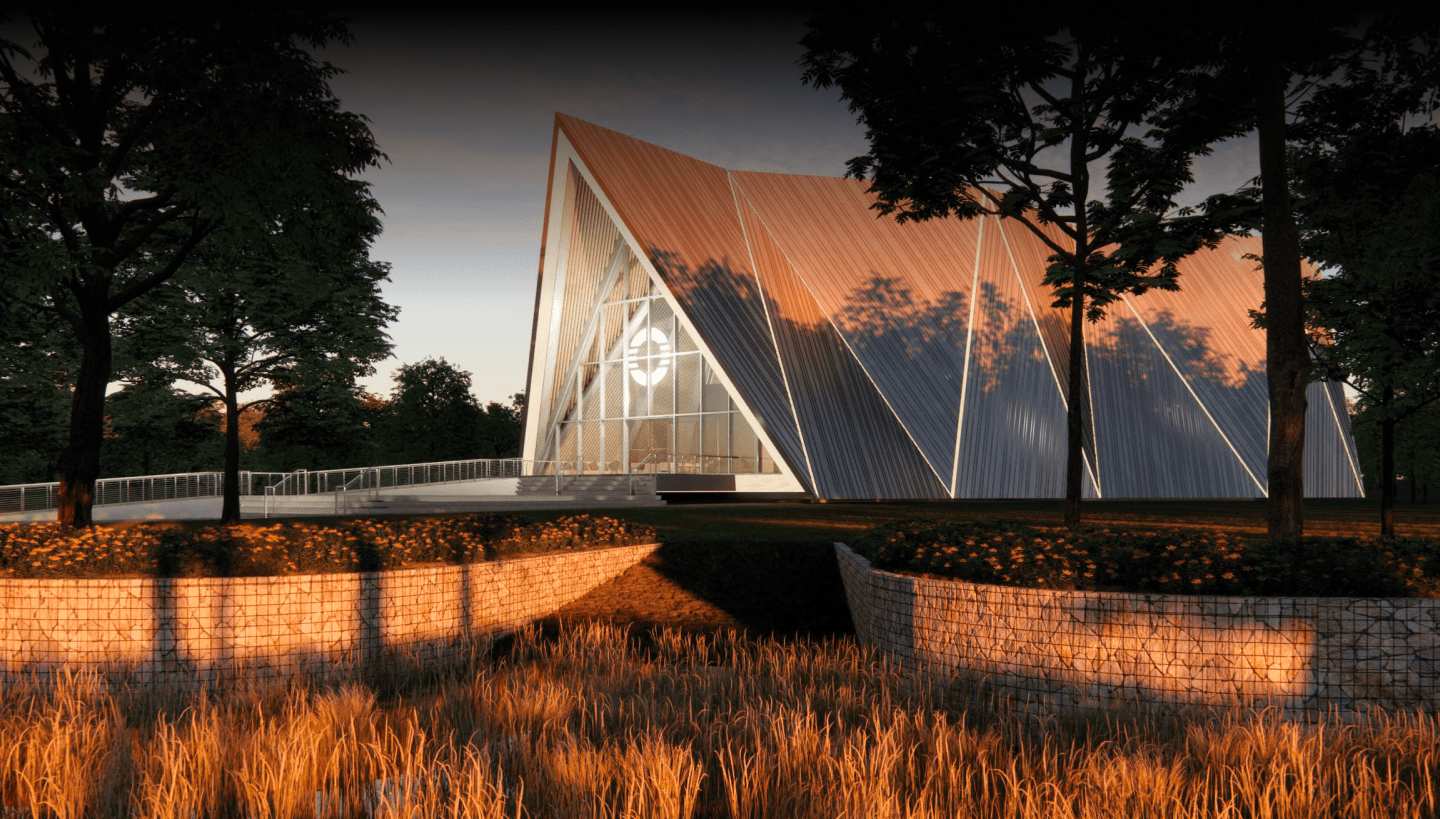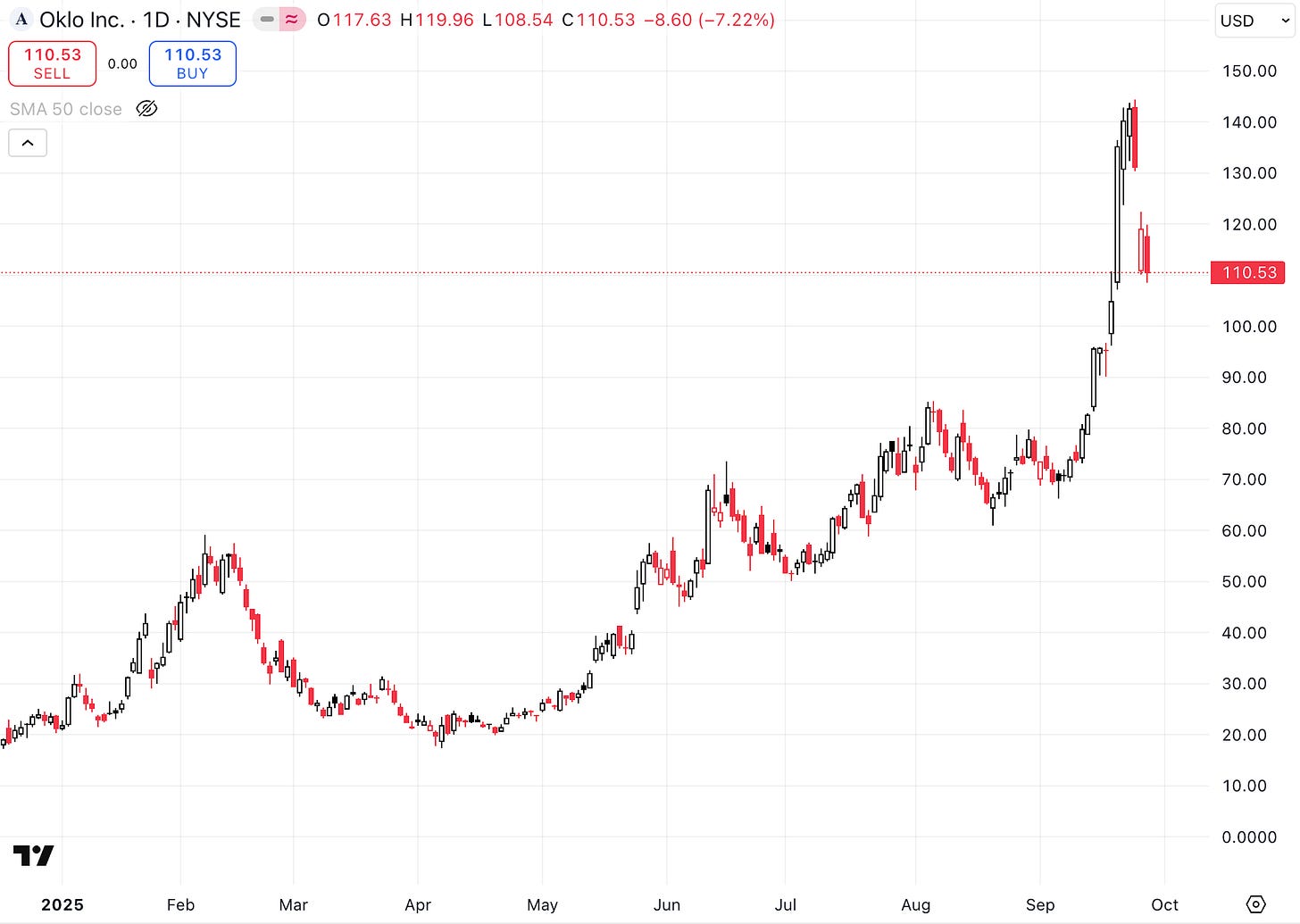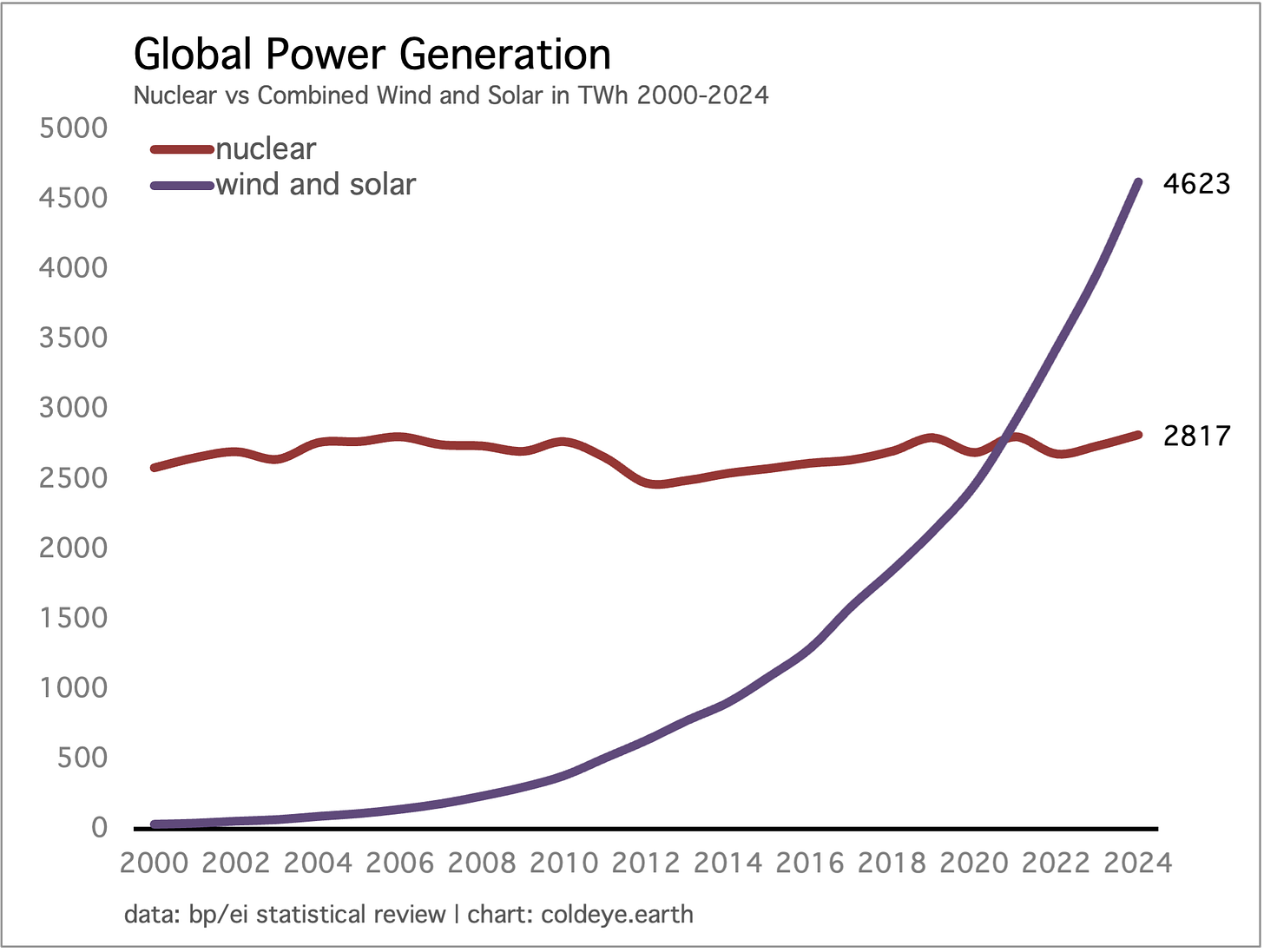Good Nuke News
Monday 29 September 2025
Nuclear power equities have been on a strong market run recently as they anticipate future growth, but does this mean the typically long nuclear development timelines have been shortened? One of the easier calls to make, coming into the new administration, was that the nuclear industry would enjoy a lot of policy support. Support alone can be life-changing for companies in this industry, as they are capital-intensive (to say the least), and they must survive long enough to achieve distant outcomes that sometimes turn out well, but mostly do not. You can think of nuclear startups as very costly, long-running science experiments as they pursue “advanced” solutions. (Entities building older designs can also face myriad, seemingly endless challenges.) Overall, the industry has been known for its failures, dependency on state support, and cost overruns that go exponential, often leading to bankruptcy—or (you guessed it) to more state support. And so it goes.
Part of what’s going on here is that markets have been pivoting all year to chase any company that might become a beneficiary of state largesse, so a number of utility names that already have working nuclear in their portfolios—Vistra Corp. and Centrus Energy, for example—have soared, along with a number of hot startups like Oklo and NuScale Power. More broadly, traditional nuclear designs are being deployed globally, in China especially, but advanced designs, or SMRs (small modular reactors), are also catching on across Asia. And now, in North America, we see early signs of progress in SMR deployment too. Ontario Power Generation (OPG) is constructing a new SMR in Darlington, outside Toronto—the first of its kind in North America. Oklo is also building an SMR, its first, on the site of the Idaho National Laboratory near Idaho Falls. In both cases, you can pretty much guess what the general plan is: build one, see if it works well, then make plans to build more.
Now, whether the share prices in the nuclear sector have gone too far, or not far enough, is not within the purview of Cold Eye Earth. But it does seem that a great deal of the future has been brought into the present through rapid share price gains. And the rate of these gains does seem to be ignoring the usual execution risk, as well as construction timelines that have long held the sector back from enjoying any growth.
Overall, everyone who roots for the continued deployment of wind, solar, and batteries should also be rooting for nuclear. As Cold Eye Earth has often explained, wind and solar and batteries have won the cost and speed race against nuclear, and that case is closed. They are cheap, effective, and reliable at generating a return on investment—qualities which have long since eluded the nuclear sector. And yet, with state support, grids that add nuclear at the margin find that emissions reductions are easier to achieve when nuclear, with its ultra-high capacity factor, comes online.
Wind and solar have trounced nuclear in the market for new generation—and again, this is final, this will never change; the race was over long ago.
The good news here is that we no longer have to waste time with a useless either/or argument over WSS (wind, solar, storage) vs. nuclear. Rather, we can proceed directly to a far more productive framing: given that WSS will forever lead the market for new generation from clean sources, what role can nuclear play in this equation? Answer: when we add nuclear capacity to an overall clean generation portfolio, it further suppresses either the growth of natural gas generation or our lingering dependency on coal-fired generation. It’s just that simple. Let’s stop making this issue so complicated.
As a reminder that the coal factor is still very real, and will not be dislodged by WSS alone, the chart below is a companion to the measure of wind and solar vs. nuclear and demonstrates that both nuclear and coal generation are heading in the wrong direction. In the fight against coal, why would you not call upon nuclear to pull up the rear, even as WSS governs and dominates at the tip of the spear?
Keep reading with a 7-day free trial
Subscribe to Cold Eye Earth to keep reading this post and get 7 days of free access to the full post archives.




